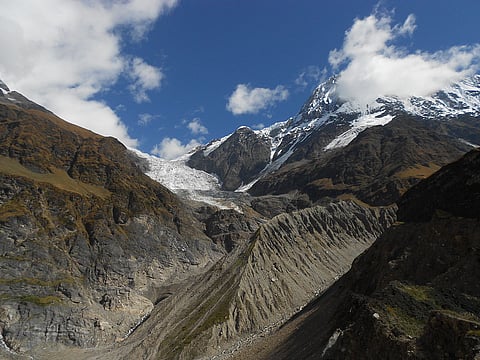Glaciers take the heat
Declared a 'revenue village' by the Uttar Pradesh government in 1960, Gangotri, located 3240 m above sea level, has since scaled up dramatically in order to accommodate those seeking Ganga's blessing. The idol of the deity arrives in May, residing in a temple built by the long-ago Gorkhali general with imperial ambitions, Amar Singh Thapa. After the Diwali festival, the idol is carried down to its winter abode in Mukhba, near Harsil. In recent years, Gangotri has also been encountering new kinds of seekers: the scientist, environmentalist and journalist, making the climb to observe and understand the apparently faster-paced melt of glacial systems, the most obvious sign of a warming of the globe.
As a pilgrim of the latter variety, taking advantage of the easy vehicular access, I arrive in Gangotri in search of a certain swami, well known for his voluminous documentation of glacial melt. I find an ashram by the name of Ishavasyam, in the inner sanctum of which hang framed photographs of ice, snow and rock. This must be it. Over tea, the young Swami Raghavendrananda expounds on global warming, from the unprecedented high temperatures in recent years in Calcutta to the drained deep water aquifers of Punjab. After a fervent monologue on the human sullying of air and water, he bids farewell, with a visiting card and a smile that passes over to his next awaiting guests.

